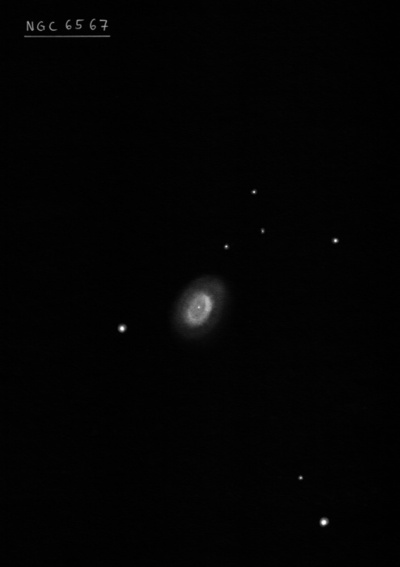
Edward Pickering discovered NGC 6567 on 18 Aug 1882 using a direct-vision spectroscope with the 15-inch refractor at the Harvard College Observatory. NGC 6567 was the 9th of 17 planetaries he found using this technique. His RA, though, was 1.5 minutes too small. The discovery was announced in AN 2459 and Sidereal Messenger, Oct 1882.
Based on Crossley photographs at Lick, Curtis (1918) reported NGC 6567 as "an oval dic, growing rapidly brighter toward the center; 8"x5" in p.a. 150° in the shorter and about 11"x7" in the longer exposures. Exceedingly faint ansae are suspected in the prolongation of the major axis, making the total length 20", but these may be very faint stars..."
200/250mm - 8" (8/15/82): appears as a mag 11 "star" at 100x. Slightly non-stellar at 200x. A slightly elongated disc N-S is visible at 400x. Forms a close pair with a mag 12 star just east. Situated in a rich star field.
400/500mm - 17.5" (7/8/94): bright very compact planetary at 220x with a mag 13 star at the east edge. Excellent contrast gain with OIII filter. A high surface brightness small disc is visible at 280x that is cleanly resolved from the following star. Has a brighter center but no central star seen. Located in a very rich Milky Way field on the SW side of the Small Sagittarius Star Cloud (M24).
Notes by Steve Gottlieb